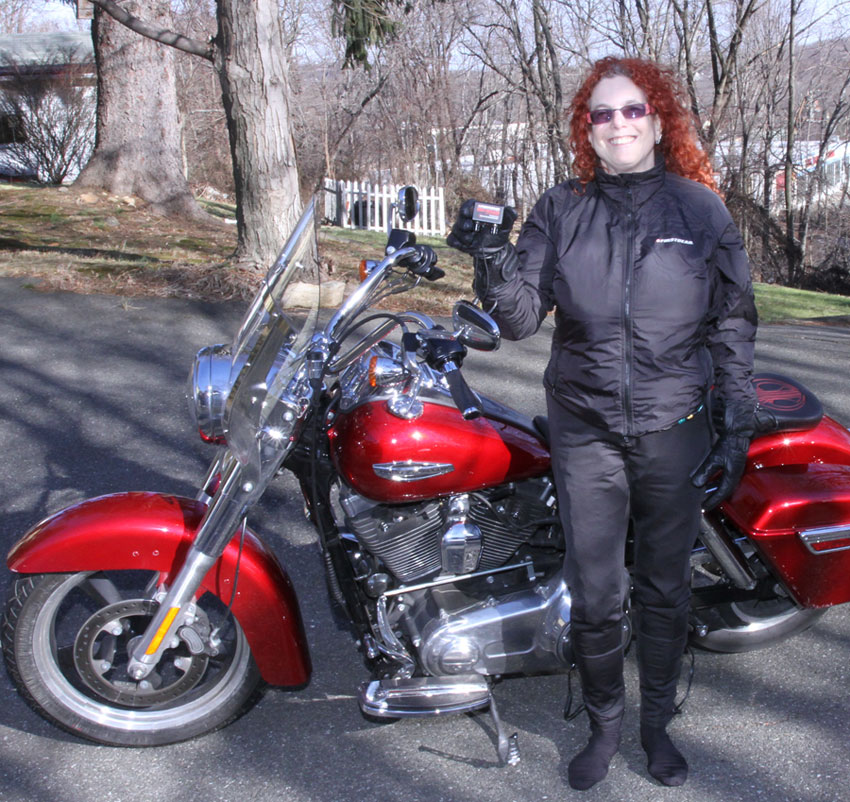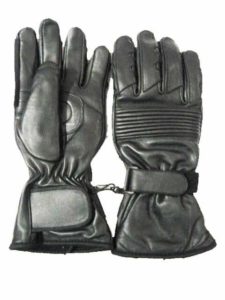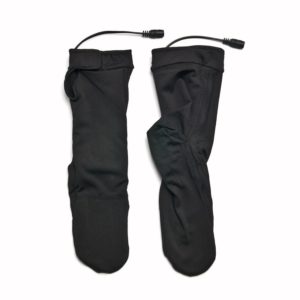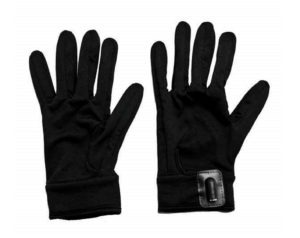This winter has brought the Northeast U.S. some of the worst weather in decades. From the near-constant snowstorms, freezing rain and the swirling, frigid winds of the polar vortex, it’s an understatement to say that the weather hasn’t been very conducive to motorcycling. Most winters I can get away with layering clothing underneath wind- and waterproof outerwear, but when the mercury plunges below 30 degrees, my riding gear just doesn’t keep me warm enough to ride long distances safely and comfortably.
So for a better solution, I turned to Firstgear, the company that manufactures the excellent outerwear I’ve worn for years. Firstgear, a premier brand of aftermarket parts distributor Tucker Rocky, offers a wide range of riding apparel, and is one of the only companies that offers full head-to-toe sets of heated gear in both men’s and women’s styles and sizes. Firstgear heated apparel is manufactured by Warm & Safe Heated Gear, a firm that’s been in business for more than two decades.

Tucker Rocky/Firstgear offers a heated waterproof jacket, but instead I selected the Women’s Heated Jacket Liner, figuring it would give me more flexibility in choosing which outer jacket I’d like to wear at any given time. Heated wind-block pants are also available, but I chose the Women’s Heated Pant Liner for much the same reason—I could wear the pant liner under jeans or outer pants, depending on the situation. I consider the Heated Socks an absolute necessity as my feet are prone to freezing in the cold weather, so that was an easy choice. But I had a tough time deciding on a product to heat my hands, so I chose both the Women’s Heated Rider Glove and the Heated Glove Liners (not to be worn at the same time).
The Heated Jacket Liner is available in either a 65- or 90-watt version. I was assured that 65 watts would generate plenty of heat in my part of the world, plus, it draws less amperage from the bike’s battery than the 90-watt model. The wattage isn’t as much of a big deal with my 2012 FLD, but I planned on using the gear while riding my 2000 FXD as well, and the FXD’s electrical system has less available amps than the newer bike models. You might want to do some calculations to make sure your bike can support all the amps your gear will need, taking into consideration other power-drawing accessories installed on your bike.

The jacket liner is a lightweight nylon shell that is “temperature neutral,” meaning that when not plugged in, it does not add extra heat under my outer jacket, nor does it add much bulk. Heating pads are located on the front panels, the upper and lower back, sleeves and collar, which is lined with fleece inside to wick away moisture. There are several zippered compartments where I stuff the wires when not in use. The size I ordered fits snugly, which is important for optimal heat transfer to the torso. It is suggested to wear it over a T-shirt or other lightweight garment, but I usually wear something a little heavier. I seem to be much more susceptible to cold than most of the folks I ride with, and I found that not allowing any air to flow into the apparel (i.e., up my sleeves or pant legs) prevents the wind from wicking the heat away from my body.
Manufactured from polyester microfiber and a small percentage of spandex, the Heated Pant Liner I selected also fits snugly; again, for optimal heat transfer. It is not recommended to be worn over any garments, and I generally choose to wear them under my Firstgear outer pants. The pant liner has anti-bacterial treatment to prevent odors, and the liner also wicks moisture away from the skin. The “heat zones” cover the thighs, knees and upper butt and are rated at 45 watts. And there are also several zippered compartments to stow wires not in use. As with the jacket liner, the pant liner is designed to be temperature neutral.

Next in my ensemble was the Heated Socks set with heat panels at the toes and ankles, where feet tend to get the coldest. They are made of a thin, soft, moisture-wicking polyester combined with a bit of spandex for stretch. Each sock is rated at 9 watts, and I wear a pair of very thin sock liners underneath for extra warmth and to keep them cleaner.
Three heated glove models are available, but the 15-watt Heated Rider model best suits my riding style as well as the conditions in which I ride. The gloves are made of soft, but tough, cowhide, and lined with a Porelle waterproof—and breathable—membrane as well as a layer of Thinsulate. The thumb has a rubber face shield/eyewear wiper; a nice touch when riding in inclement weather. The wrists are elastic with an adjustable hook-and-loop fastener. Heat elements are contained in the fingers, thumbs and backs of each hand. I’d consider the Heater Rider Gloves suitable for autumn, winter and spring riding—at least here in the Northeast—and they are quite functional riding gloves even without turning on the heat.
The light and thin 11-watt Heated Glove Liners are made of stretch poly fabric and fit nicely under several pairs of winter gloves that I already own. Heating elements are contained in each finger and thumb and run all the way down both sides to the wrists, which are snugged closed with hook-and-loop fasteners. I found that both the gloves and glove liners heat equally well, so it’s just a matter of personal preference.

Tying the gear together with the power source is the Heat-Troller, which is offered in three mount options—mounted, portable and remote—as well as single- or dual-controlled. I selected the Dual Remote Heat-Troller Kit, which comprises a dual-switch remote, receiver and 15-amp battery harness. The dual capability allows me to connect each of the four pieces of heated apparel in multiple configurations, and the remote capability not only eliminates the wire between the controller and the power source, but also allows the rider to keep the remote wherever it’s convenient. Inserting the remote in the Double Portable Heat-Troller Pouch allows me to clip it inside the lower left-sleeve zippered pocket in my Firstgear outer jacket where I can reach it easily for adjustments. The receiver is connected to one of the jacket wires and I have it permanently stowed in one of the jacket’s zippered compartments.
The Heat-Troller ships with two full pages of detailed instructions for installing the battery harness, syncing the Heat-Troller Receiver and Remote (you should only need to do this once), remote control usage and installing the Heat-Troller Receiver. Each piece of apparel also ships with diagrams and instructions. And there are a series of wiring instruction sheets, videos and troubleshooting tips on the Warm & Safe website (www.warmnsafe.com). It took several riding excursions for me to determine which pieces of apparel I wanted paired up with each controller switch, and several calls to the patient and knowledgeable Warm & Safe customer support team to figure out how to connect the wires properly. Each piece can be heated individually, as well, but if you want to use the socks or gloves without their corresponding liners, pants or jacket, you will need to purchase additional Y-harness wiring. There are other wiring accessories available, too, based on what configurations you desire.
The heated jackets and liners are made for either single- or dual-zone heating, and can be plugged into DC power (i.e., your bike battery) or a battery pack. DC power does not shock you when wet, so you can still wear the heated apparel in the rain. I also found that each piece of apparel was exceptionally comfortable, with flexible panels where the body stretches. And the internal wiring connecting to the internal heat panels was placed in such a way that I couldn’t feel it while riding… or walking.
I also used some tricks that I learned awhile back, such as looping the wire that connects each sock with its corresponding pant leg into a loose knot so that any tension on the wires does not unplug the connection. And I bought a package of six colored electrical tape rolls, placing matching colors around each connecting wire so that I didn’t have to remember the correct wiring connections every time I geared up. I also make sure my shins are well protected from the cold because there are no heat panels below the knees of the pant liners.
If you forget to turn off the Heat-Troller when you are finished with your ride, it will draw only enough juice to power the small L.E.D. lights. The one disadvantage to the remote controller is that it is battery-run, however, if the battery dies, the dual receiver still stays on at one-third power. I also needed to purchase a Warm & Safe SAE/COAX Plug Adapter (#71000310—$12.95) to connect the coax battery lead to my Battery Tender, which accepts only a SAE lead.
I’ve worn the gear while riding to Daytona, the Outer Banks of North Carolina and many local destinations, and it sure beats having to stop every half-hour to warm up. It’s a lot safer to ride without numb toes and fingers, and needless to say, a lot more comfortable, allowing me to extend my riding day considerably.
The heated apparel is washable, and the waterproof receiver can be left in the jacket when laundered by hand. Detailed warranty information for each product can be found on the Firstgear website.













Great article! I agree 100% that this gear is essential in the winter months. It saved me this past year by keeping me warm on all my trips. Thanks for sharing!